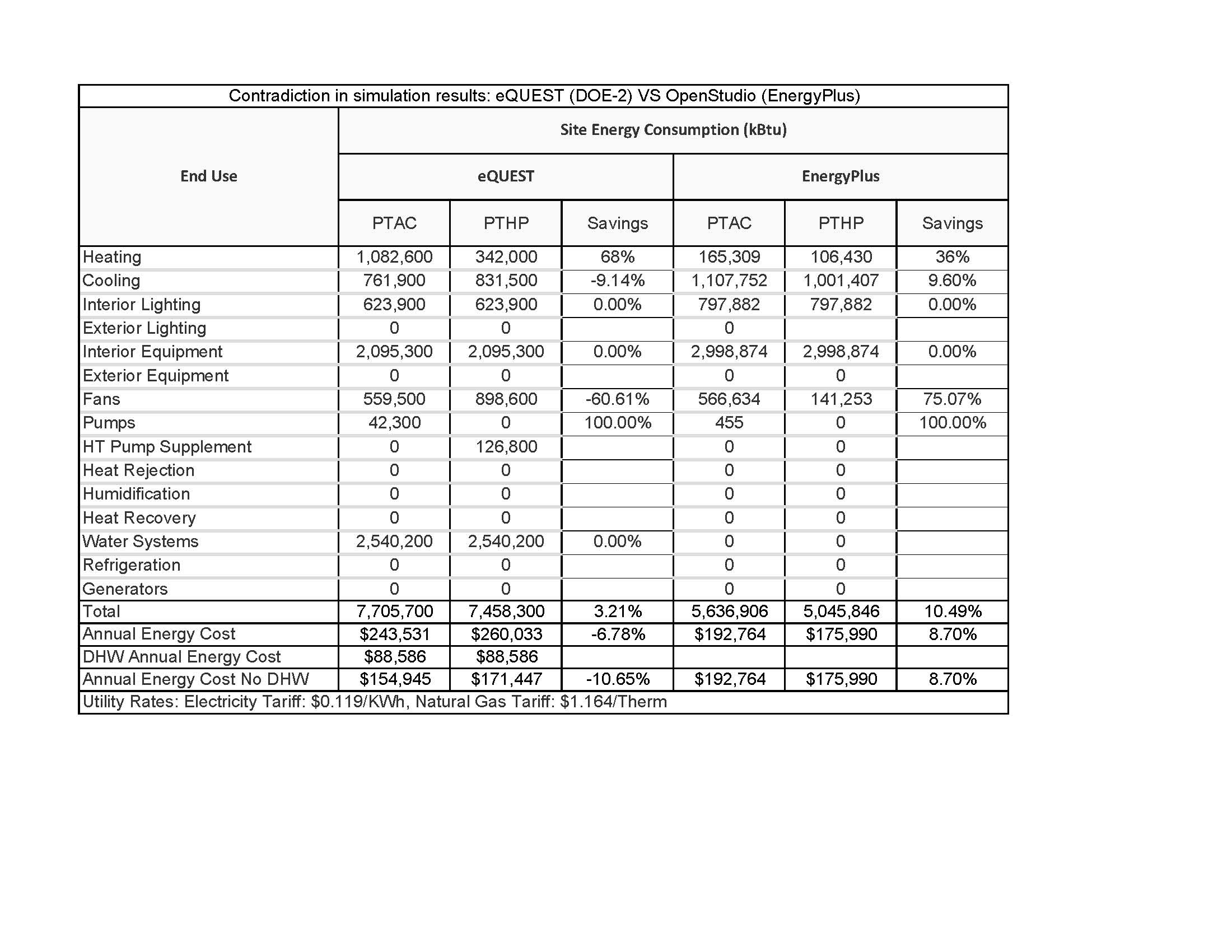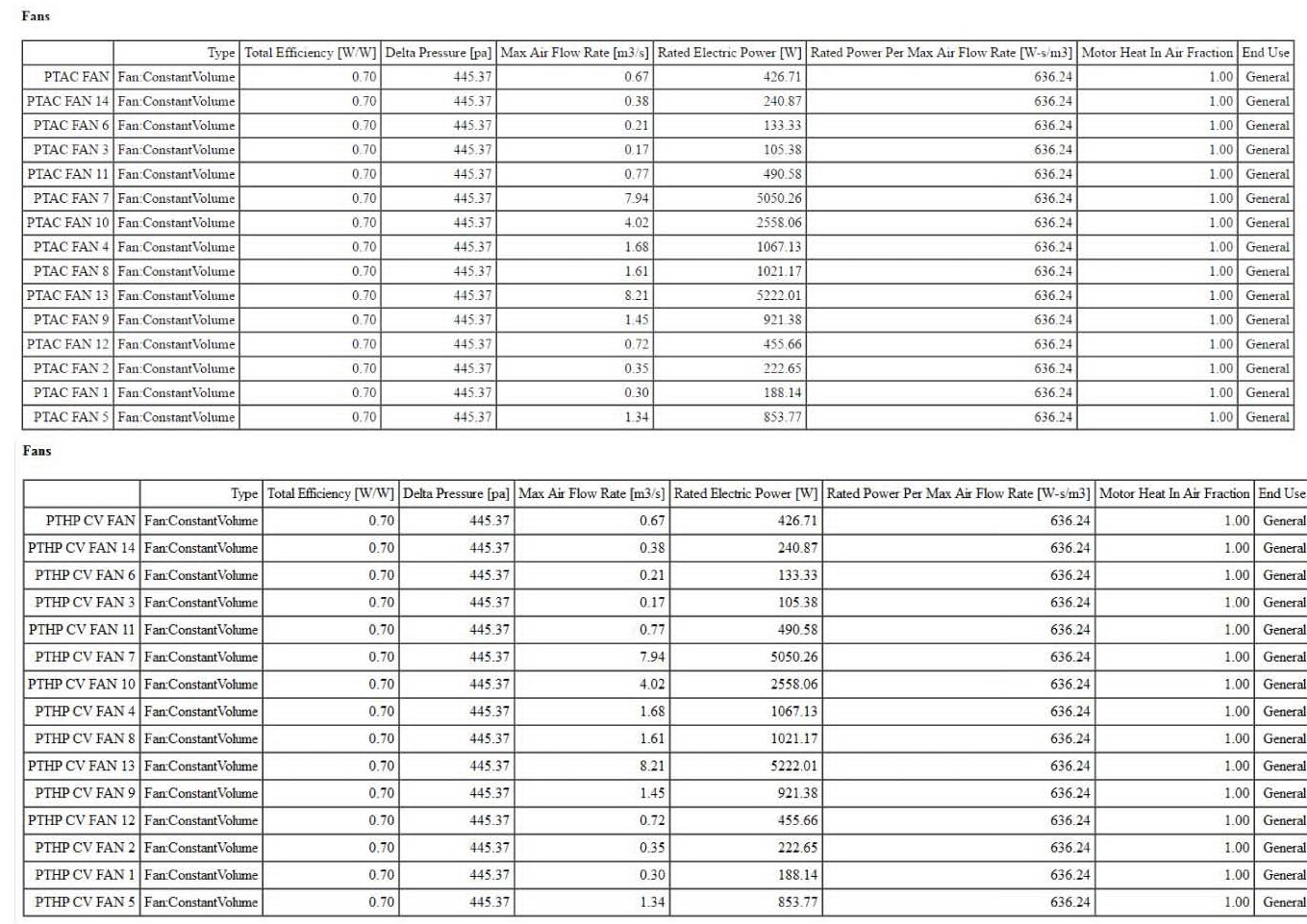Contradiction in simulation results: eQUEST VS OpenStudio
I am studying annual energy costs of two baseline models for a LEED residential building, PTAC VS PTHP. This is a 9 story building in Washington, DC and to simplify the process just created a bulk model per ASHRAE 90.1-2007 energy modeling requirements.
Keeping everything the same in two models except the HVAC system, simulation results per eQUEST version 3.65, built 7163 indicate changing PTAC to PTHP will increase the annual energy cost from $219,597 to $236,476 (-8.1% annual energy cost savings). This was the results that I was expecting based on my previous experience.
Surprisingly, when I use OpenStudio-1.12.0.ef50b89958-Win64, simulation results indicate changing PTAC to PTHP will decrease the annual energy cost from $102,130 to $117,449 (13% annual energy cost savings).
In short:
- In eQUEST, changing PTAC to PTHP = 8.1% annual energy cost increase
- In OpenStudio, changing PTAC to PTHP = 13% annual energy cost savings
following are links to files of this experience. I would appreciate it is someone would review these models and let me know the reason(s) of this contradiction.









I would start by looking at a single HVAC type (PTAC or PTHP) in between the two models trying to figure out why you have half the consumption in OpenStudio compared to eQuest to begin with...
@Julien Marrec, I think as @ljbrackney pointed out it is the result of different approaches between the two calculation engines. I am struggling to find out why with EnergyPlus simulation engine PTHP system is more energy cost efficient than PTAC but in DOE-2 engine it is the opposite.
I seriously doubt that a factor of 2 is an acceptable range of deviation due to the calculation engine only. Otherwise there's either something really wrong about DOE 2 or about EnergyPlus, or both, as the purpose of both are seemingly to simulate actual real-world systems.
I tend to agree with Julien - the engines will contribute to some disagreement, but not all - certainly not as much as you're seeing. Did you follow up on @pflaumingo's observation below?
Yes I did, please refer to the answers part